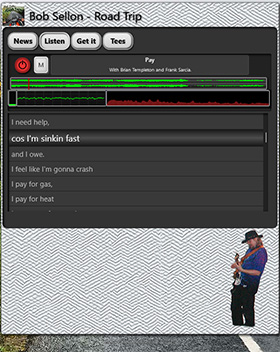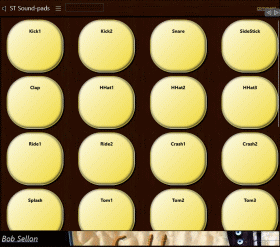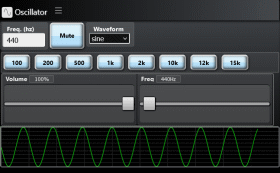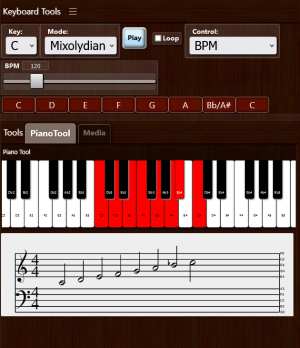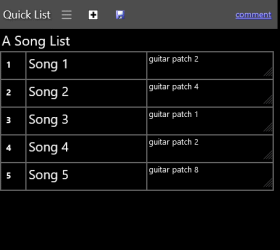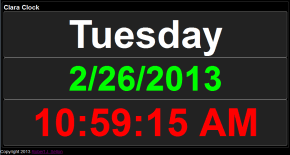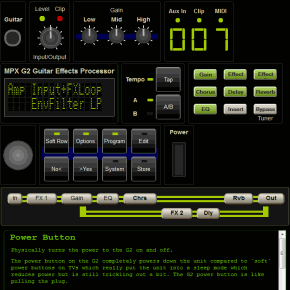Billerica, MA USA
8/25/2025 New music by Stec Records recording artist Bob Sellon: "Gerrymander My Love"
Gerrymander My Love
For more details, visit the Gerrymander page.
And visit BobSellon.com for more info and lyrics.
Check out Bob Sellon`s new album Road Trip".
Available on the Bob Sellon YouTube channel and over 20 music services including Spotify, Amazon and Apple Music, Road Trip features 12 original songs by Bob Sellon. Shirts of many colors were sure to follow:






on Amazon
9/8/2025 New music by Stec Records recording artist Bob Sellon: "Molson The Dog"
Molson The Dog
For more details, visit the Molson-The-Dog page.
And visit BobSellon.com for more info and lyrics.
Music by Bob Sellon. Something to hear with your ice cold beer.
Sunny Afternoon
Get it for you music collection at one of these:
This is the original release which was mastered by Bob Sellon. This song is also included in the No Muse Is Bad News collection which was mastered by Tom Waltz.
Visit BobSellon.com
Music by Bob Sellon with Bruce Alger
"Cool this summer, cool like rain.."
Cool This Summer
Visit BobSellon.com
"Bad Boy " music by Bob Sellon and friends. An enhanced live recording from a NoMuseIsBadNews.com event.
BadBoy
Available on most music sellers but you can visit here for a preview and link to purchase. The "Menace" includes Frank Sarcia on drums, Ken Shano on guitar and Jim Fabiano on bass. "Now junior, behave yourself"
This is the original release which was mastered by Bob Sellon. This song is also included in the No Muse Is Bad News collection which was mastered by Tom Waltz.
Be sure to visit BobSellon.com for details.
3/16/2025 We bring you the full 25 songs performed by Bob Sellon and friends at the 2015 No Muse Is Bad News Music Series.

Also checkout the Complete playlist on Spotify and "YouTube.
(now includes full versions of all songs)

And visit BobSellon.com And visit NoMuseIsBadNews.com to find out more about the songs.
 Come Out To Play", a song by Bob Sellon
Come Out To Play", a song by Bob Sellon Molson The Dog", a song by Bob Sellon
Molson The Dog", a song by Bob Sellon Gerrymander My Love", a song by Bob Sellon
Gerrymander My Love", a song by Bob Sellon Road Trip", an album by Bob Sellon
Road Trip", an album by Bob Sellon No Muse Is Bad News" by Bob Sellon and friends
No Muse Is Bad News" by Bob Sellon and friends The River" by Bob Sellon with Bruce Alger
The River" by Bob Sellon with Bruce Alger Cool This Summer 2022 remix" by Bob Sellon with Bruce Alger
Cool This Summer 2022 remix" by Bob Sellon with Bruce Alger Ooh La La"by Bob Sellon with Brian Templeton on harp.
Ooh La La"by Bob Sellon with Brian Templeton on harp. Sunny Afternoon"by Bob Sellon. Original release mastered by Bob.
Sunny Afternoon"by Bob Sellon. Original release mastered by Bob.Also availabile on the No Muse Is Bad News collection which was mastered by Tom Waltz.
 Changes" by Bob Sellon with Ken Shano and Frank Sarcia. Original release mastered by Bob.
Changes" by Bob Sellon with Ken Shano and Frank Sarcia. Original release mastered by Bob.Also availabile on the No Muse Is Bad News collection which was mastered by Tom Waltz.
 Here, There and Everywhere" by Bob Sellon with Ken Shano. Original release mastered by Bob.
Here, There and Everywhere" by Bob Sellon with Ken Shano. Original release mastered by Bob.Also availabile on the No Muse Is Bad News collection which was mastered by Tom Waltz.
 Bad Boy" by Bob Sellon with Ken Shano and Frank Sarcia. Original release mastered by Bob.
Bad Boy" by Bob Sellon with Ken Shano and Frank Sarcia. Original release mastered by Bob.Also availabile on the No Muse Is Bad News collection which was mastered by Tom Waltz.
Check out Bob Sellon`s new album Road Trip".
Available on the Bob Sellon YouTube channel and over 20 music services including Spotify, Amazon and Apple Music, Road Trip features 12 original songs by Bob Sellon. Shirts of many colors were sure to follow:






on Amazon
"Bad Boy " music by Bob Sellon and friends. An enhanced live recording from a NoMuseIsBadNews.com event.
BadBoy
Available on most music sellers but you can visit here for a preview and link to purchase. The "Menace" includes Frank Sarcia on drums, Ken Shano on guitar and Jim Fabiano on bass. "Now junior, behave yourself"
This is the original release which was mastered by Bob Sellon. This song is also included in the No Muse Is Bad News collection which was mastered by Tom Waltz.
Be sure to visit BobSellon.com for details.
Music by Bob Sellon. Something to hear with your ice cold beer.
Sunny Afternoon
Get it for you music collection at one of these:
This is the original release which was mastered by Bob Sellon. This song is also included in the No Muse Is Bad News collection which was mastered by Tom Waltz.
Visit BobSellon.com
Music from Bob Sellon and friends: "Changes". Recorded live (with overdubs) at the 2015 No Muse Is Bad News show in Billerica, MA in the U.S. Dip your finger/mouse in our virtual stream
..and watch the ripples change along with the song in realtime.
Some places it is available:
or the #distrokid preview page.This is the original release which was mastered by Bob Sellon. This song is also included in the No Muse Is Bad News collection which was mastered by Tom Waltz.
Music by Bob Sellon, "Ooh La La".
"I wish that I knew what I know now.."
Includes Brian Templeton on harmonica and artwork by Bob Conroy.
Visit: bobsellon.com.
Ooh La La
Some places you can get it:
..or just say "Alexa, play Ooh La La by Bob Sellon"
Also check the #distrokid preview page.
Billerica, MA USA
Live music by Bob Sellon with Ken Shano
Here There And Everywhere
Recorded live at a No Muse Is Bad News show.
This is the original release which was mastered by Bob Sellon. This song is also included in the No Muse Is Bad News collection which was mastered by Tom Waltz.
Get more information about Here, There and Everywhere at BobSellon.com
Billerica, MA USA
3/16/2025 We bring you the full 25 songs performed by Bob Sellon and friends at the 2015 No Muse Is Bad News Music Series.

Also checkout the Complete playlist on Spotify and "YouTube.
(now includes full versions of all songs)

And visit BobSellon.com And visit NoMuseIsBadNews.com to find out more about the songs.
8/25/2025 New music by Stec Records recording artist Bob Sellon: "Gerrymander My Love"
Gerrymander My Love
For more details, visit the Gerrymander page.
And visit BobSellon.com for more info and lyrics.
9/8/2025 New music by Stec Records recording artist Bob Sellon: "Molson The Dog"
Molson The Dog
For more details, visit the Molson-The-Dog page.
And visit BobSellon.com for more info and lyrics.
10/22/2025 New music by Stec Records recording artist Bob Sellon: "Come Out To Play"
Come Out To Play
For more details, visit the Come-out-to-play page.
And visit BobSellon.com
11/22/2025 New music by Stec Records recording artist Bob Sellon: "Power From The Sun"
Power From The Sun
For more details, visit the Power From The Sun page.
And visit BobSellon.com
12/5/2025 New music by Stec Records recording artist Bob Sellon: "On My Own"
On My Own
For more details, visit the On My Own page.
And visit BobSellon.com
Software releases from Stec Records
Our new [free]WebMIDI Recorder panel
Our free WebMIDI recorder allows you to quickly record MIDI data coming from a keyboard or other MIDI device without installing any software. Check out Bob Sellon's WebMIDI Recorder article for more details.
Our new Sound-pads panel provides large buttons that play drum and other percussion sounds when touched/clicked.
The sounds are loudest near the middle and are responsive enough to be used in a musical context on touch devices. You can adjust the size of the pads and pick which of the 45+ sounds to use (all of the sounds are shown by default) and adjust the reverb level and overall volume levels. Your settings changes are saved in the storage in your browser so it always comes back the way you left it if you reload the page later.
Our free ST Metronome [web] panel provides a musical timing reference that allows you to select or tap a tempo, select the sound to use for the click, set the reverb level and set a title then recall it later.
4/9/2025 Update - The metronome has received a number of updates including an overhaul of the look and the addition of a "Precision" mode as well as the ability to set the number of beats per measure. Access is now also available to the app's reverb (level) and the relative accent level for the first beat of the measure.
Check out Bob Sellon`s ST Metronome article for more information or go directly to the metronome here.
Generate pure audio sinewaves, square waves, triangle and sawtooth waveforms with our tone generator (oscillator) panel.
This web-based tone generator can create sine waves (tones), square waves, triangle waves and saw-tooth waves at frequencies from 20Hz to 20kHz.
Sine waves are typically used for audio testing since their smooth nature makes distortion easier to pick out with your ears and with test equipment.
An example would be to feed it into your guitar amp and see if you hear distortion on clean settings. Same for PAs if you think a speaker is blown.
Our Keyboard Tool panel helps you learn modal scales by playing them through your computer speakers, showing them on a musical staff and showing them on a virtual piano keyboard.
On web browsers that support MIDI, the panel also allows you to connect to instruments and see the notes appear on the staff and piano keys but a "MIDI Monitor" panel is also provided that shows the exact MIDI data coming and lets you save the data to a generic MIDI file. The panel also includes a cheesy bubble machine [panel] that creates bubbles for each incoming MIDI note.
Our QuickList panel is a simple web page for creating set lists with notes for each song.
Colors, fonts and some of the dimensions can be saved on a per-list basis. Visit Bob Sellon`s software page for more details.
Budget Calculator
Billerica, MA USA
Update - Our Budget Calculator got a facelift and a feature upgrade with quantities now available for Income items letting you see how ticket prices vs number of tickets sold affects your bottom line. We also added button to show a text version of the budget suitable for cutting-and-pasting and made adjustments to the example musician rates (still probably below the poverty level).
Clara Clock
The "ClaraClock.com" shows the current day of the week, date and time in large, easy to read fonts.
"My late mother, who was in her late 80s at the time, asked me if I could get her a clock with large letters that she could easily see from across the room. I looked around and didn't find anything that great so instead, I created a "clock" web page for her and set it up on an old computer in her living room where she could see it. While still simple, I did add the option to change the colors and an optional text message at the bottom. i.e. Happy Birthday. I hope you enjoy it as much as she did." - Bob Sellon
Note that the Clara Clock is alaso available at "ClaraClock.com".
Virtual MPX G2 Help Panel
Our virtual front panel for the Lexicon MPX G2 provides information about the controls and displays: "virtual MPX G2 panel"
The StecTools Checklists panel is a free web app that allows you to create checklists for keeping track of equipment moving from one location to another such as to and from a gig.
Check our Checklists info panel for more details.

GotStew.com
Our GotStew.com site contains information on food pantries, food banks and other resources for those who are struggling.

Visit BobSellon.com
Visit RequiredListening.com






